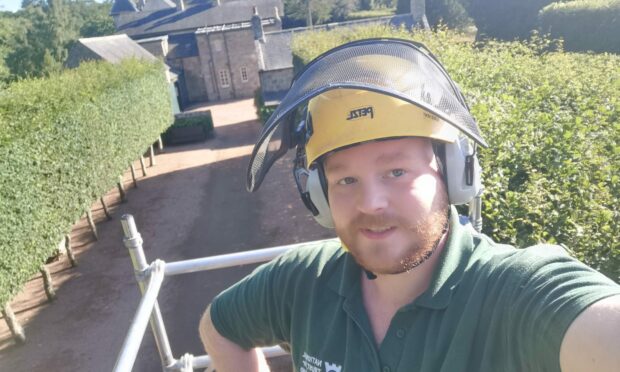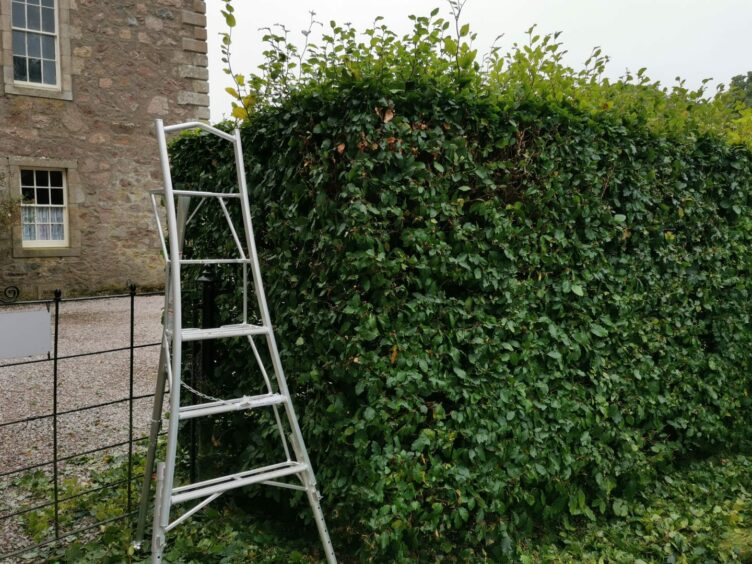My biceps and forearms ache. The dull reminder of yesterday’s labours. I stand up to make a brew and my back reminds me it is upset too.
Must be hedge cutting season again. Summer’s heady heights are over. Autumn is approaching. It’s late summer now, that awkward transition phase.
Some days the sun is high, belting down on me in shorts and T-shirt; other days I’m in full waterproofs while grey skies pelt a relentless drizzle on me.
Either way I’m sweating. I’d take the sunny weather any day. Waterproofs always make you feel like a pouch of human boil-in-the-bag rice.
Whatever the weather, the hedges stand there full of this year’s exuberant growth needing to be trimmed.
Wait for the birds
The most important thing is that we must be patient with our hedges. Birds nest from March to early August.
We must ensure that they are left alone so they can play their important role in the ecosystem.
After mid-August I check that the hedges aren’t harbouring any late leavers then start.
I begin doing all the usual suspects like the yews, beech, hawthorn, cotoneaster, hemlock and so on.
Hedge cutting to my mind, is one of the most physically intensive jobs in gardening.
It can be heavy going. This is especially so when cutting tall and wide hedges. Clambering up and down ladders or scaffolding repeatedly for hours on end with all your gear.
Ear defenders, safety specs, hedge cutter, rake or bamboo cane to brush off the excess.
In the case of wide hedges it may be a case of a close hand held hedge cutter as well as a long reach extendable one.
Cutting a tall, wide hedge in the drizzly, warm autumn rain whilst tired and sweating buckets in waterproofs; gardening ain’t all fun!
Practice makes perfect
Hedge cutting takes practice. You can’t be great straight away. It takes time to get a feel for what it takes to get a lovely smooth finish.
Great advice is always to remember that you can take it off but you can’t put it back on!
I must say though that a very common mistake I see is if people are not cutting their hedge hard enough.
They give it a wee tickle and leave it with some this year’s growth still on. If we do this then your hedge will continue to grow and grow year on year.
If you want to increase the size of your hedge that’s fine but if you want it to stay the same size then you need to remove all that new growth.
If you look closely at the stems you should be able to see fairly easily what is the newly-long, soft growth.
Follow the new growth back and there will be a point where the new growth ends and more lignified thick growth starts.
This is where it should be cut back to (unless growing the hedge).
Do it your way
Everyone does it differently. I have been shown many ways to cut hedges from various people.
There isn’t necessarily best way. I personally always prefer to give a section of the hedge a first quick pass to remove the majority of the new growth leaving only a little of the new growth on.
After this it is much easier to see the natural shape and then account for any dips or hollows that you may want to leave to fill in whilst cutting the rest around it.
I try to lock my legs and shoulders in place then use the full range of motion of the hedge cutter. Sweeping from the bottom up then back down again across the same trajectory.
This locking position keeps the cut nice and smooth and straight and by going back over the same position it ensures any bits missed on the first sweep are caught on the way back.
It is a repetitive job. Sweep up, sweep down, brush off the hedge. Decide on the final depth of cut and give one more pass up and down.
Once all the cutting is done then secateurs come out to hand cut any low bits that have missed near the ground.
It pays to grab the spirit level now and again and check it. The ultimate tool though is the human eye. The spirit level does not account for the ground level. If it undulates then trim according to what looks right.
String lines and canes can be a brilliant tool for this scenario. Admittedly nothing is more annoying than being up a ladder in the middle of the cut and accidently cutting the string!
Best of luck doing yours. If you hire someone then spare them a thought!
Take care and happy gardening.





Conversation